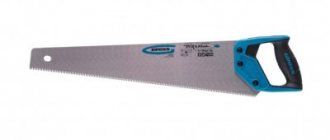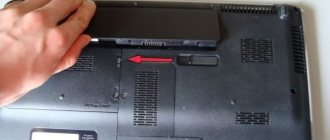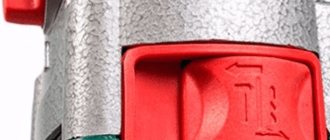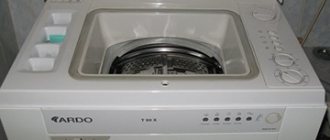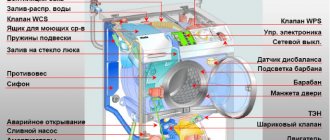The article was prepared with the information support of https://www.multicut.ru.
A router is a tool for processing lumber that makes many rotations at high speed. There is both professional equipment, such as milling and engraving machines, and for self-processing, which requires certain skills and knowledge. Detailed instructions with a training video on the website will help you carry out high-quality wood processing operations with a manual electric router.
Mastering a hand cutter for wood in practice
By purchasing a portable woodworking device of this type, you can independently master construction skills, relying on video and photo master classes on the Internet. These materials often contain not only the basics of working with a hand cutter, but also proprietary techniques that can expand the range of available tasks and also simplify the work.
At the initial stage of getting to know the device and functionality, it is useful to gain basic knowledge about the tool.
What a hand cutter can do
A manual milling machine is a compact power tool that has a high degree of mobility compared to a milling unit and allows you to:
- Creation of recesses and grooves.
- Drilling through and blind holes.
- Both straight and shaped processing of edge and end parts of parts.
- Sawing parts of complex shapes.
- Applying patterns and inscriptions to a wooden surface.
- High-precision copying of parts.
It is used in carpentry, as well as in construction craftsmanship and other related fields. With its help you can do a lot of woodworking:
- Production and assembly of furniture.
- Mortise of door hinges and locks.
- Artistic wood cutting.
- Wood processing during construction.
- Sawing holes and grooves.
Having a hand cutter in your home arsenal will speed up and simplify the tasks of repairing and creating wooden products, provided you follow the rules for working with power tools.
Types of milling cutters
Milling machines are divided into the following types:
- Universal – designed to work with different types of material. It can process parts in horizontal and vertical positions. Cut grooves and corners, make screw elements.
- Horizontal - used only for processing parts that are in a perpendicular position relative to the cutting part of the mechanism.
- Widely versatile – the machine has a rotating device, with which it can perform operations in both horizontal and vertical positions.
- Vertical and horizontal machines that do not have a console. Their task is to process large parts.
- Longitudinal types of machines use work with large parts. In this case, only cylindrical, disk, or shaped nozzles are used.
Rules for working with a hand router
Working with a hand cutter on wood should be carried out using work gloves and safety glasses: this measure will protect your hands from splinters and other minor injuries, and your eyes from construction debris. Manipulations must be performed slowly, without sudden movements: otherwise the result may be disappointing due to the presence of defects (“torn” edges, grooves, etc.).
Removing and securing the knife in the clamp must be done using a screwdriver or the key included with the unit. It is important to tighten the thread firmly, but not to overdo it so as not to strip it.
The movement must be carried out evenly throughout the entire operation of the engine. Otherwise, the result will not be of good quality.
Beginners often apply too much or too little force when working with a cutter. As a result, the quality of the product suffers. You should not slow down the unit when turning the cutting element, as this can lead to overheating of the cutter and burning of the wood.
The required cutting depth is achieved by calibration - using a lifting mechanism that changes the distance between the pin and washer located next to the electric drive. A straight guide helps to achieve smooth movement of the knives during operation. Some cutters are equipped with a circular guide, which allows you to create smooth circles of large radius. Milling circles with a radius of less than 15 cm is carried out using an adjustable centering pin inserted into a provided hole in the base of the tool.
Milling of grooves is carried out using an angular stop mounted on the cutter body. The workpiece being processed is fixed in a stationary state - for safety and quality of the result. It is recommended to select grooves with a depth of more than 5 mm in several approaches. The same rule applies to any work on removing the top layer of the workpiece to any depth.
You should not start working with a router without studying the safety rules. The cutter is a source of increased danger that can cause injuries and injuries. Woodworking with a hand cutter will be safe and productive if:
- The cutter will be sharp (the need to replace the nozzle will be indicated by the uneven edge of the product and an overheating motor).
- The milled part will be fixed in a stationary state.
- The depth of wood removal will not exceed 5 mm in one approach.
- Nozzles will be replaced only after the instrument has been de-energized.
When working with a cutter, it is important to monitor the condition and “behavior” of the tool and follow the manufacturer’s recommendations contained in the instructions or on the packaging. Violation of the technological process, as well as lack of proper care of the tool, will lead to undesirable consequences. One of the most important working conditions is the correct choice of attachment for the router.
Angle stop
It is possible to get an exact (one to one) copy of the original by installing an angle stop with a feeler gauge (like many other accessories, it can be purchased separately). In this case, the workpiece is placed not under, but above the template. For precise adjustment of dimensions, adjustment of the position of the probe can be provided.
By the way, if you install a support plate or an adjustable stop for working in a horizontal position instead of a bracket with a feeler gauge, you will get a tool for flush milling of edge overlays.
Main types of nozzles
There are many attachments for working on wood with a hand router:
- Edges. Equipped with a bearing that allows you to set the distance from the edge of the part to the knife. Used to create both curly and smooth edges on wooden parts.
- Groove (spiral, fillet, dovetail, shaped). Allows you to cut recesses and grooves.
There are both simple and stacked cutters, assembled from two or more cutting elements. Using a typesetting cutter, you can realize the required shape of the product.
In addition to the shape, attachments for hand routers differ in thickness, height, and the relative position of the knives, which allows you to select the cutting elements for any task.
The most common cutting techniques
Using milling, you can create wood products. Carved railings, furniture facades, decorative elements, all kinds of crafts and souvenirs. The capabilities of this instrument are limited only by the skill and imagination of the master himself. There are a number of basic elements that any beginner should master. Mastering the following cutting techniques will allow you to achieve complex tasks through their application and combination.
Open groove
If it is necessary to create a workpiece with a groove starting from the edge, the cutter should be positioned so that the knife protrudes beyond the edge of the wood. After this, install the cutting element and only then start the engine. After processing the edge of the product, you need to lift the knife, loosen its lock and turn off the power to the unit.
Blind grooves are created in a similar way, with the only difference being that the cutting element is installed not at the edge of the product, but at the starting point of the slot.
Deep groove
If the depth of the required groove exceeds 5 mm, it is recommended to carry out the work in several approaches, each time increasing the depth of the excavation, especially when working with hard wood. The depth of the last notch should be limited to 1.5 mm - for the smoothness of the part and the geometry of the groove.
Narrow groove
To ensure convenience and results when creating a part with a narrow groove, it is recommended to attach a flat base to the router base. This part, in tandem with guide rods installed on both sides, serves as an auxiliary plane that ensures the correct trajectory of the knife. It is important to set the location of the axes in line with the center of the cutting element. The hand cutter is driven smoothly and slowly, ensuring that the guides fit snugly to the side parts of the workpiece.
End surface
The main indicator of correct operation of a cutter with the end part of a wooden workpiece is the geometric accuracy and smoothness of the resulting edge. When processing the end, it is necessary to begin its implementation by creating a shallow cut by moving the knife in the direction of its rotation. This will ensure high quality sampling of the base material, after which all that remains is to correct the result by moving the cutting element against the direction of its rotation.
Curved edges
To create curved edges with a manual router, it is necessary to ensure the accuracy of the trajectory of the knife and use templates equipped with a stop ring. With this cutting method, a round plate with a rim, called a “ring,” moves along the template, providing a path for the cutting part of the tool. Before starting work, the thrust ring is fixed on the sole of the router. The template is attached to the workpiece, which is fixed with clamps on the working surface.
Using templates when working with a cutter allows you to produce identical parts in the required quantity.
Preparing for work
To successfully process wooden surfaces with a router, you must undergo preliminary training, starting with simple tasks and easy models.
It is also important to understand the operating principles of the router itself, its capabilities, and the purpose of each type of cutter. A beginner needs to master simple cutters with a small diameter
When sanding wood, they are easier to control because the smaller diameter creates less resistance to the wood being sanded. The choice of tree also matters. Soft wood of poplar, pine or birch is best suited for training. Having mastered simple operations, you can begin to perform more complex ones.
Decorative finishing
Complex carved elements, three-dimensional patterns, paintings and inscriptions, curly cutouts - all this can be created in the milling process. As the master's practical experience increases, the complexity of the projects available to him will also increase.
Artistic milling is a popular method of processing wooden products, and knowing the basics of the process will help you cope with it.
To ensure stability of the surface being processed, it is best to use a vice. The drawing is applied to the product in advance with a simple or carpenter's pencil. After the surface is marked and firmly fixed at an angle convenient for work, the direct milling process begins.
An attachment is attached to the router, which carefully, layer by layer, removes the wood along the applied contour, which gives the image volume.
Modern architecture rarely resorts to the use of hand tools in the process of creating decorative elements. Carved trims, intricate railings, furniture with relief patterns and monograms - these products are successfully created using an electric hand router, which provides high accuracy and speed of artistic cutting.
What is the maximum milling depth in one pass?
This, of course, largely depends on the diameter of the cutter. The larger it is, the greater the load that can be applied to the cutter. However, we should not forget the fact that as the size of the cutter increases, the load on the cutter also increases. On the other hand, if you take a thin cutter and try to make a deep cut with it, it can easily break in the neck area.
ATTENTION!!!
To prevent this from happening, the milling depth in one pass should be selected at the rate of 1/3 of the cutter diameter. This is the rule that real masters follow.
Safety precautions
Caution when working with a hand router is the key to the safety of the master and the results of his work. Basic safety rules:
- Use only sharp cutting elements. The degree of sharpness of the knife can be checked by carefully touching the tip of the cutter with the tip of your finger: if the skin “sticks” to the blade, the knife is sharp. Another sign of insufficient sharpness of the knife is overheating of the unit’s motor during operation and a “dirty” edge of the product.
- Check the serviceability of the power cord and plug of the unit before each time it is turned on.
- Remove dust and debris from the caliper, housing and collet nut.
- Securely fix the cutter in the collet using a wrench.
- After installing the cutting element, you should fix it in the desired position by pressing the caliper lever.
- Always use safety glasses when working with a cutter, regardless of the presence of a protective screen in the design of the unit. You can supplement your protection with a respirator.
- Before starting the electric motor, make sure that the moving part is not blocked.
- To avoid injury, first start the unit and only then insert its knife into the workpiece.
- After finishing milling, remove the knife from the part, and only then turn off the engine.
- While working, keep the rotating cutter head and the internal opening of the caliper in your field of vision.
- Before replacing the nozzle, completely de-energize the unit.
- It is important to secure the workpieces to the work surface using clamps.
- Use only clean knives. If dirt is found on the nozzle, clean it before installation.
- When using an edge cutter with a bearing, make sure that it rotates easily on the end end and does not jam or squeak.
- Use only a properly functioning unit.
A hand cutter for wood is a tool that will not take up much space, but will allow you to perform most tasks when working with wood. The unit will make minor household repairs accessible and will open up opportunities in the field of modern architecture and personal creative development. Choose a router carefully, follow the rules of its operation, and working with it will be productive and full of positive emotions.
Edge processing: using templates
It is better to process the edges of a wooden board using a surface planer. If this is not possible, then you can use a hand router, although this will take some time. These works are carried out both without a template and with a template. If there are no skills or very few of them, then it is better to use a template. For processing edges, straight edge cutters are used, both with one bearing at the end of the cutting part and with a bearing at the beginning (see photo).
Edge cutters.
You can use an already processed board or other flat object as a template. Moreover, the length of the template must be greater than the length of the workpiece, both at the beginning and at the end of the workpiece being processed. This will avoid unevenness at the beginning of the edge and at the end. The most important thing here is that the template or object acting as a template has a smooth and even surface. In addition, its thickness should not be greater than the gap located between the bearing and the cutting part.
The width of the part is less than the length of the cutting part
Moreover, the longer the cutting part, the more difficult it is to work with the tool, since more effort is required. In this regard, it is better to start working with cutters that have an average length of the cutting part. The operating principle for edge processing is as follows:
- The template is attached so that it is at the desired height and has a flat horizontal surface.
- The template is firmly mounted to a table or other surface.
- The cutter with the roller is installed so that the roller moves along the template, and the cutter (cutting part) moves along the workpiece. To do this, perform all the necessary manipulations with the template, workpiece and tool.
- The cutter is installed in the working position and clamped.
- After this, the tool turns on and moves along the template. In this case, you should decide on the speed of movement, which is determined by the depth of processing.
- The milling unit can be either pushed or pulled, depending on what is convenient for you.
After the first pass, you should stop and evaluate the quality of the work. If necessary, another pass can be made by adjusting the position of the tool. If the quality is satisfactory, then the clamps are removed, freeing the workpiece.
Using this approach, it is possible to remove a quarter along the edge or in some of its parts. This is done by setting the cutting edge so that it extends to the required depth into the part.
Quarter shot on a furniture façade.
If you replace the cutter with a shaped one and move the guide, as well as use a stop, you can actually apply a longitudinal pattern to the part (pictured below).
Applying a longitudinal figured pattern to the workpiece.
If you use a similar milling technique (with a template), you can easily master the technique of working with wood in general. After some time, you can abandon the templates, since their installation takes a lot of useful time.
How to make a straight edge without a template: you can’t do this without experience.
The width of the part is greater than the length of the cutting part
Quite often, the thickness of the workpiece is greater than the length of the cutting part of the cutter. In this case proceed as follows:
- After the first pass, the template is removed and another pass is made. In this case, the template will be the already processed part. To do this, the bearing is guided along the machined surface. If the cutting part was again missing, then another pass will have to be made.
- For final processing, you should take a cutter with a bearing at the end, and the workpiece should be turned upside down, after which it is secured with clamps. As a result, the bearing will move along the machined surface. This approach makes it possible to process thick parts.
The bearing is guided along the machined surface, and the cutting edge processes the rest of the workpiece.
In order to master the work of a hand milling tool, you will need a lot of rough blanks, which you don’t mind throwing away later. No one succeeded the first time. To achieve anything, you need to train hard.
Achieving Various Shaped Edges
If a figured edge is required, which is most likely necessary, then first pay attention to the condition of this edge. If it is uneven, then you will have to level it and only then begin to form a curved edge by selecting the appropriate cutter.
Rounded edge.
It is necessary to prepare the surface so that the cutter does not copy the curvature along which the roller will move. In this case, a sequence of actions is needed, otherwise a positive result will not work.
If you need to process a frankly curved surface, then you can’t do without a template. It can be cut from plywood, about 10 mm thick, by first applying a pattern and cutting out the template with a jigsaw. The edge of the template must be brought to perfection using a hand router.
Drawing on plywood.
To mill a curved edge, first use a router without a template, carrying out the so-called rough processing. After this, the template is fixed and the workpiece is processed finally. If there are places where you need to remove a lot of material with a milling cutter, then these places can be cut out with a jigsaw.
Working with a hand router using a template

